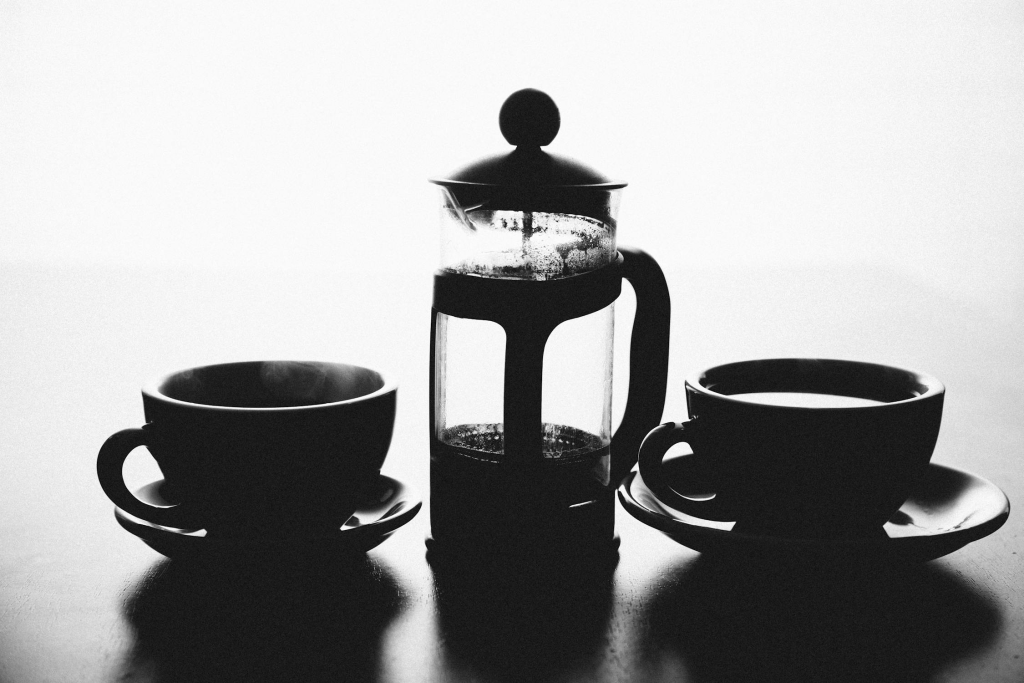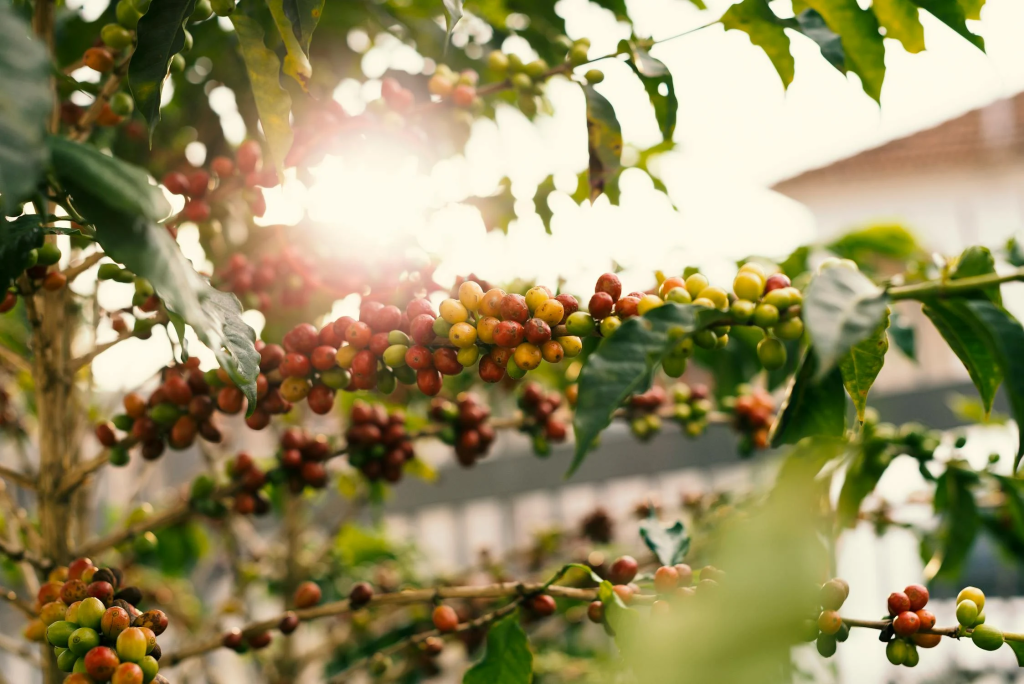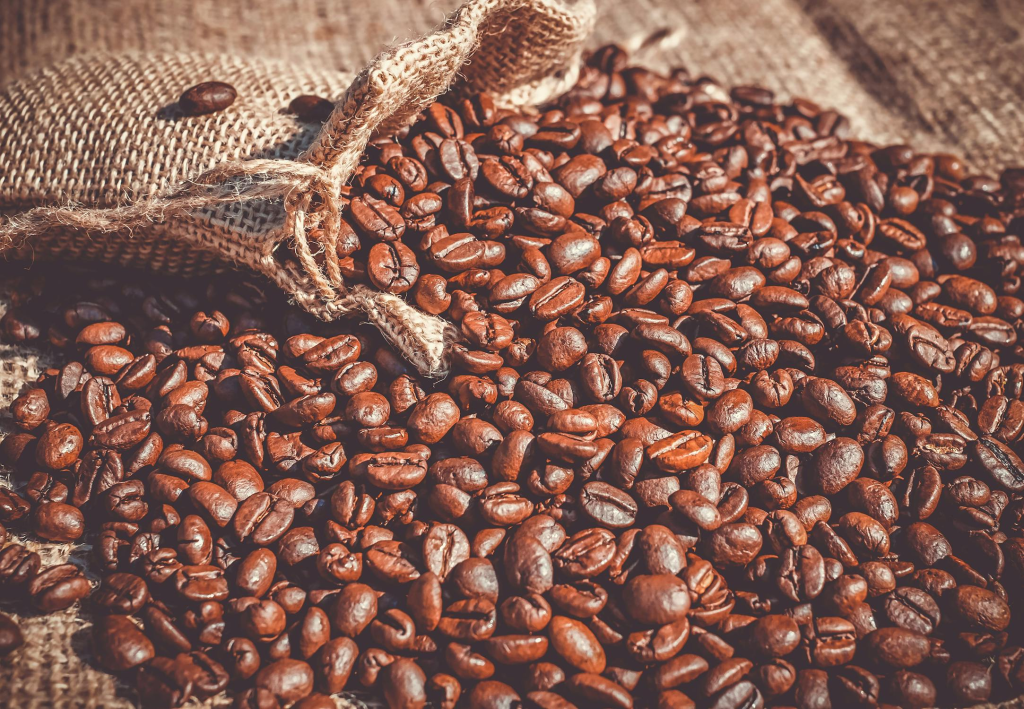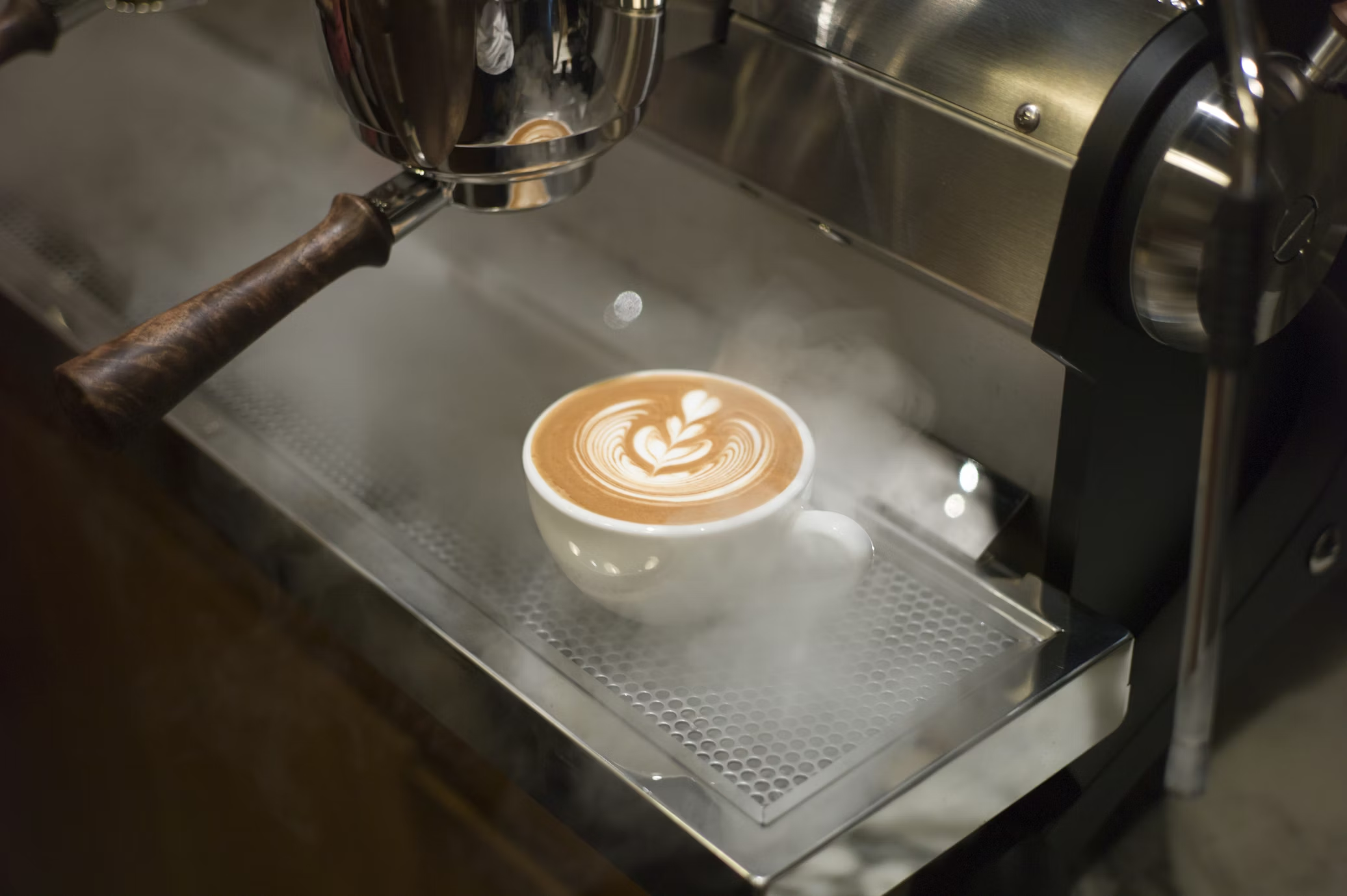
Coffee, coffee, coffee! We all remember Lorelai and Rory’s love of coffee. Or the iconic Central Perk and all its Friends. Coffee is ubiquitous to our way of living, and so present throughout the world. But let’s face it, there is coffee and there is Specialty Coffee! Bucharest sure is lucky to have its fair share of specialty coffee, and much of that is the merit of today’s guest, Adrian Simion. He is the founder of Guido, a pioneering coffee roastery. We want to know more about … welll… everything.
Simona: Let’s start with the beginning: where does the passion for good coffee come from, the one that led to the founding of Guido? How did you get here? For me it was simple, I discovered specialty coffee through Guido and other brands like yours, but you had to create your market.
Adrian: Yes, there wasn’t really a market, it was super incipient and somewhat lacking standards, to be diplomatic. I discovered my passion for coffee at home. I started drinking coffee around age 27 and kept experimenting with preparation methods. I read a lot about specialty coffee on forums like homebarista.com, where they talked about coffee being fruity, floral, and discussed acidity – qualities that didn’t exist in commercial coffee then and still don’t now. We only had commercial coffee available here. In general, specialty coffee wasn’t really available in Europe – it wasn’t a trend, you didn’t know it existed, it wasn’t a common thing.
Specialty coffee emerged as a concept about 40 years ago. Even now, if you talk about specialty coffee, many people don’t know what it means. Imagine back then – the number of people who even knew the concept was insignificant. I found out about it online. I read extensively about preparation methods. “Extensively” means about six months; I had a lot of free time during that period. It was like a full-time job of reading, with little experimenting because I didn’t have access to specialty coffee or even lighter roasted coffee. Anyway, it became an interest. Around 2013, I took the plunge and bought an espresso machine which, at that time, was very expensive – about 2,000+ euros – with a lever mechanism, quite unusual for home use, but a pretty good espresso machine.
Simona: Quite expensive for home use.
Adrian: Yes, you put it on a table in your house – it’s made for home use. I kept experimenting with it until I attended a tasting where I met Paul Ungureanu (now at Boiler, and we’re partners at Boiler x Guido) and Floriana Vlaicu, with whom I quickly became friends. That tasting impressed me tremendously (for example, the milk foam part, which I had never tasted before; I didn’t drink cappuccino because I thought it had a strange foam). Together with them, I also took a trip to Athens, where things were much more advanced. It was very impressive, it blew my mind!. There I saw, for the first time in reality, what specialty coffee means when properly roasted and prepared.
Simona: Athens was ahead of us? Did they have specialty coffee like we have now?
Adrian: Exactly the same thing. Exactly what we’re doing now, exactly what everyone is doing now. I don’t know if they’re still ahead of us, but they’re very advanced anyway. Greeks are serious coffee drinkers. We’re not the real coffee drinkers, although we like to believe that. We don’t have the traditional coffee culture.
Simona: I have a friend who said that for her, quantity is more important than coffee quality.
Adrian: I can understand that too, because coffee also affects how a person functions and there are people who function better with coffee. In that case, quantity matters. But quality matters too. The fact that you can add a pleasant sensory and taste experience on top of the caffeine effects is a big plus. It’s something most people consume daily. I don’t know if there’s any other food that’s consumed globally so consistently every day. To add a layer of pleasure and enjoyable experience to this daily ritual is a “big deal.” That’s what specialty coffee offers you.
Simona: And after you came back from Athens, you decided to…?
Adrian: I made the decision: this is what I’m doing. Although I had no expertise or experience whatsoever, no connection to the coffee industry or the food sector.
Simona: You were in another field then?
Adrian: Yes. I was a freelance consultant, working with companies from Romania and abroad and with the government, at both national and local levels. Before that, I also worked in stock trading, ran a brokerage agency, and did programming. I’ve worked in many fields. I never worked in a corporation, except for two weeks.
Simona: And what was the first step? Where did you get contacts, where did you source coffee?
Adrian: By searching and asking around. Floriana was a partner at the beginning; we wanted to do this together and that’s how we started. She had much more experience and contacts. When we were in Athens, the owner of that place became our trainer. He was one of the best in specialty coffee at that time, with extensive experience, participating and winning international competitions. That’s how we started. It was hard to build a foundation, to create a market for a product that didn’t exist. It was very complicated. I graduated from Automation and Computer Science, so I don’t have any economic background.
Simona: Did you start with the idea of selling coffee directly to cafes?
Adrian: No. The initial strategy was to have this place, Guido in Eminescu (street), where we had the roastery, the coffee shop, and where we served coffee “to go” (we didn’t have tables). It was also a coffee school where we conducted training. Now we continue with all these activities, but we’ve grown and don’t do everything just here anymore. Initially, the goal was to sell to individuals (B2C). I didn’t think about B2B, since I didn’t understand what they wanted or how it worked. It was very different; cafes expected you to provide espresso machines. That’s how the commercial coffee business worked and still works. If you buy coffee from them, they provide all the equipment.
In specialty coffee, this isn’t really the practice and I didn’t want to bother with it. B2B has certain particularities. Even though I had worked in the business sector, I initially didn’t want this approach. But the demand came to me: “we want to do this in our café too.” The first major partnership, important for us as well, was with M60. They opened their café in Mendeleev (street) in December 2014. They sourced coffee exclusively from us and we delivered everything: equipment, training, coffee, follow-up. These are things we still do today for many other cafes. Growth was very small at the beginning, until it reached a point where it gained much more momentum along with the market. We grew with the market.
Simona: Can you tell us, for those who aren’t familiar, how coffee comes to be in the form we have it in our cup? Where do you buy it and how do you choose it?
Adrian: We receive many samples from various suppliers who aggregate multiple producers. We probably have dozens of samples to evaluate every week. We roast them in small quantities (50g), then we do “cupping” (tasting) and evaluate them. From these, we make our selections.
Simona: How often do you change the batches?
Adrian: We change quite often. A batch lasts at most one year. We always have “fresh crop” by choosing the recent harvest. Now I think we’re approaching 30 different batches. Every month about two or three run out and we have to replace them then or wait a bit, because there are specific periods when new coffee becomes available. Around this time, April-June, the new crops arrive and we have a lot of selection work to do. Some also come in autumn. We also make selections during intermediate periods, depending on what runs out and what coffees we want to offer. We’re always looking for good coffee with a good price-quality ratio.
Simona: Do you roast them here?
Adrian: No, we now have a facility of over 200 square meters in Apaca, on Iuliu Maniu, where we handle all production operations. We also have a large laboratory there where we do sampling, testing, and training. We recently purchased a new roaster this year and we’re starting to profile it. This means finding the optimal roasting profile for each coffee, according to our preferences. Each batch has its dedicated profile, often requiring adjustments.
Simona: Do you have a favorite batch or does it always change?
Adrian: It always changes. I always prefer what we’re currently roasting from the batches we have. It’s not like you find a good coffee and that’s it, you stick with that one. You have to keep exploring.
Simona: If you’re in another country, on vacation, and don’t have specialty options, do you drink whatever coffee is available or none at all?
Adrian: My personal preference is to avoid it. I was in Asia, on an island where there wasn’t much specialty coffee, and I did drink an espresso at one point, but I asked them to make it very short. Generally though, I avoid it – I don’t suffer without coffee. On the other hand, I do travel with my own equipment and coffee.
Simona: Do you have portable equipment?
Adrian: Yes, a grinder and a V60, an AeroPress or a French Press – I always bring something with me.

Simona: What advice do you have for someone who wants to try making specialty coffee at home? What’s the easiest method?
Adrian: Honestly, I’ll start with what’s difficult. I find it very hard to make a truly good espresso at home. For example, I don’t even have an espresso machine at home. Even us baristas, with all our experience, we throw away several shots before getting it right. Making a good espresso at home is difficult, in my opinion. Not to mention the automatic “one-button” machines – they do make coffee, but not one you can truly enjoy; you don’t get the maximum out of that coffee. If you’re passionate, you’ll succeed. When I was just getting into it, I would make five coffees just to drink one good shot. It was about the process of making that shot, not necessarily about drinking the coffee.
It’s much easier to make a “brew” at home: an infusion, a pour-over. After all, you’re simply pouring water over coffee; you just need to pay attention to a few parameters that are relatively easy to monitor. It’s much easier to achieve a good result this way. Even the ibrik (Turkish coffee pot) is a decent method if you find a recipe that extracts properly – meaning not burning it, as they used to say traditionally that it needs to boil three times. In specialty coffee, coffee should never boil. A French Press is super easy: you control the amount of coffee, the amount of water at a reasonable temperature, then you just press the piston. It’s like making tea. And even good tea requires some knowledge to prepare properly.
That would be the optimal approach – at least to understand what you’re looking for in specialty coffee and why we go to such lengths with profiling. It’s different from making ice cream, for example – and I don’t mean this in a negative way – but with ice cream there are clear recipes and methodologies where physical processes are easy to control. With coffee, the roasting process involves chemical chaos. Two shots will never be identical because of this chaotic nature. We throw the dice in a controlled manner to get results roughly in the desired range, but they’re never exactly the same.

The beans are different, being an agricultural product. With bread, it’s not the same – both small wheat and large wheat produce similar bread. However, if you select small coffee beans and roast them separately from the large ones, you’ll get two noticeably different coffees: one might be floral, the other fruity, one bitter, another acidic. It’s controlled chaos, not a classic industrial process – at least in specialty coffee. In commercial coffee (commodity), things are different; you roast the coffee much more intensely and the differences fade, so we don’t perceive them anymore.
Simona: Are there myths about coffee that we should debunk?
Adrian: I don’t know, maybe that there’s no such thing as a long espresso.
Simona: There are discussions about whether it’s healthy or not, how much to drink…
Adrian: Even water is unhealthy in excessive amounts. The same applies to coffee. Too much coffee is bad. Some people are more sensitive to caffeine and other substances in coffee – there are many compounds present. That’s true.
Simona: What do you think about luwak coffee?
Adrian: The whole process is a disgrace, and the quality has nothing to do with what a decent specialty coffee roaster would deliver, not even some ultra-premium coffee costing 1000 euros. I visited such a farm in Indonesia. I saw the animals; that’s what they were selling. The coffee quality has no merit.
Simona: If we’ve learned how to make coffee at home, how do we recognize good coffee in a cafe? Are there ways to tell if it has potential to be good? Let’s say you’re somewhere unfamiliar with the brand.
Adrian: Are we talking about specialty coffee or coffee in general? The first step is to determine if they serve specialty coffee. How do you detect this? Some cafes display the coffee bags, others specify where their coffee comes from. In general, cafes with specialty coffee promote their source, the roaster, or mention that they have their own white label. There really is a significant difference from commercial coffee. I understand that some people are accustomed to commercial coffee. One indicator would be whether the barista uses a scale when grinding and preparing coffee. Now, modern equipment (grinders, espresso machines) often has integrated scales for precision.
Simona: We started discussing how you created a market that didn’t exist. Now, after many years, there is a market in Bucharest. Could we say that we have a specialty coffee culture in Bucharest comparable to other countries?
Adrian: Yes, Romania is very well positioned in Europe in terms of specialty coffee. We’re truly at the top – not just our own perception, but we’re actually recognized as such. If you come from Romania, people abroad identify you as coming from a region with a developed specialty coffee culture.
Simona: Do you think it’s a trend or something that will endure?
Adrian: It’s certain that it will remain; the trend won’t disappear. What might happen is a slowdown in growth, which is very high anyway and not sustainable indefinitely. It can be influenced by economic factors. Another important aspect: the price difference between commercial coffee and specialty coffee isn’t as significant anymore. Commercial coffee has become much more expensive, while specialty coffee is only a percentage higher (I’m not talking about very expensive special batches). An average specialty coffee now has a relatively close price point. If before we paid 2-4 times more than for commercial coffee, now we pay a premium of just 30-50% for better quality.
Simona: Does the country of origin matter? Many people say they prefer only Ethiopian coffee or only Brazilian…
Adrian: Countries do have certain general characteristics. In each country, you can find both exceptional coffee and terrible coffee. But on average, countries have distinctive profiles. With Brazil, I expect coffee with lower acidity, perhaps chocolatey notes, nuts, caramel. That’s probably 80-90% of what the country produces.
When discussing Ethiopia, the grade of the coffee matters (the score) – meaning what rating anyone would give that coffee. In Ethiopia, there are grades from 1 to 4, and lower in other categories. With a grade-1, you expect an Ethiopian specialty coffee that’s floral and fruity. The majority are like that. This comes from being grown at high altitudes. If in Brazil the average altitude is 1000-1100m, in Ethiopia it’s 1800-2100m. This creates different characteristics: much more acidity, fruitiness, floral notes. The planted varieties also matter. Specialty coffee has evolved enormously in the last 10-11 years with incredible changes at the producer level. Colombia, for example, has revolutionized coffee in recent years.

Simona: Do you think new players could enter the market – countries that couldn’t grow coffee before but now might due to climate change? I heard they’ve started making specialty coffee in Spain.
Adrian: Unfortunately, yes. That indicates major global changes. The fact that you can grow coffee in Spain, in a temperate zone rather than the usual tropical zone, is honestly very bad news. It means things are changing dramatically. Coffee doesn’t just need the right climate, but other factors too. Generally, it’s grown in countries with lower average incomes because it involves so much manual labor. Brazil is more technologically advanced, which is why it produces high volumes and was cheaper, although prices have increased due to high demand. But there’s still a lot of manual work in cultivation and processing, especially for quality. That’s why it’s grown in low-income countries. It’s about selecting cherries at precisely the right ripeness – neither green nor overripe. This is done manually in Africa. If living standards rise, it won’t be economically viable to pay someone 1000 euros to pick beans. The price of coffee would increase significantly – it’s simple mathematics. So even if coffee cultivation becomes possible in Spain, mass production would be difficult or very expensive, even with advanced technology. I saw a coffee harvesting machine once – it’s as large as a building, absolutely massive.
Simona: In conclusion, is there anything else you want to share?
Adrian: For those who haven’t tried specialty coffee yet, give it a chance and don’t be disappointed if your first experience isn’t the best or differs from your expectations.
